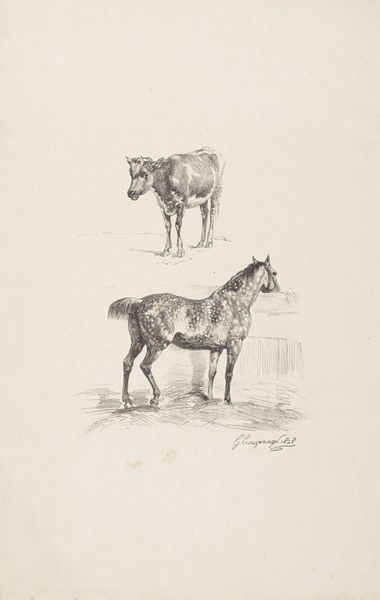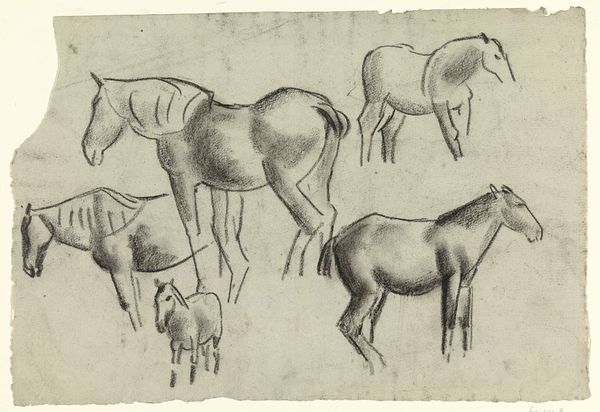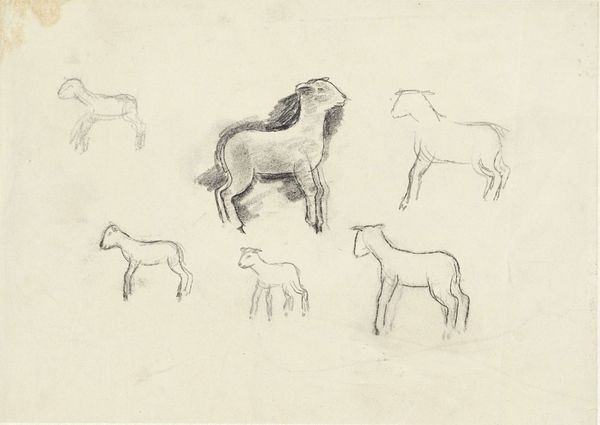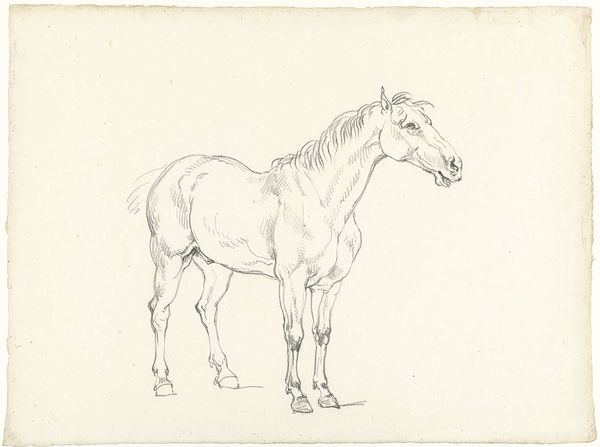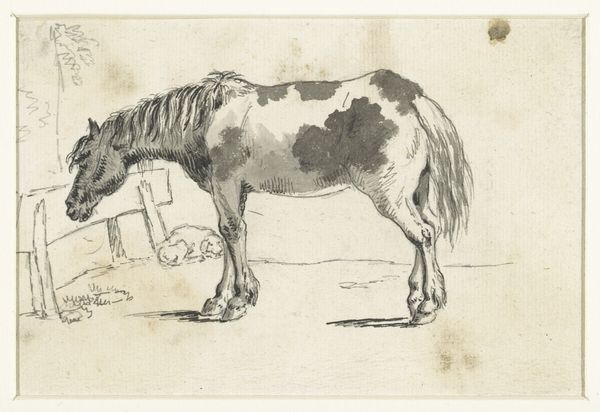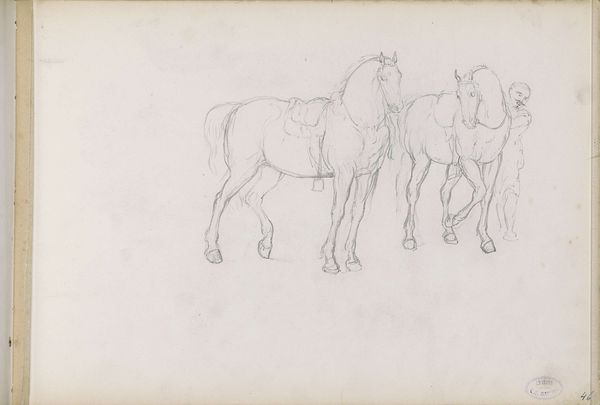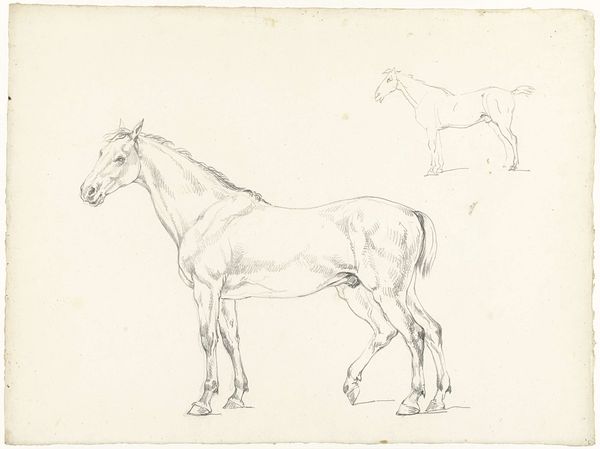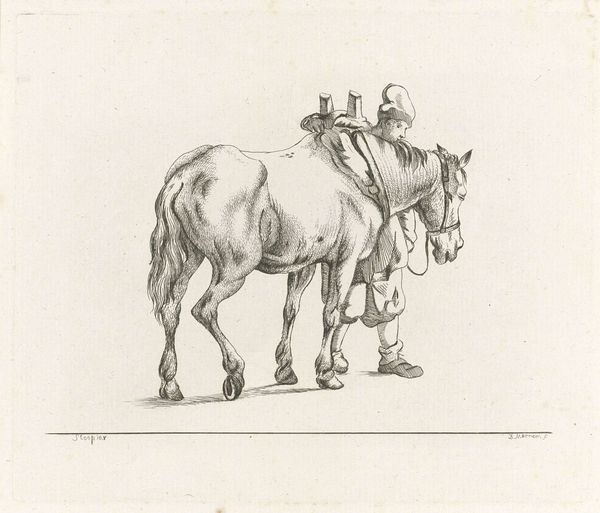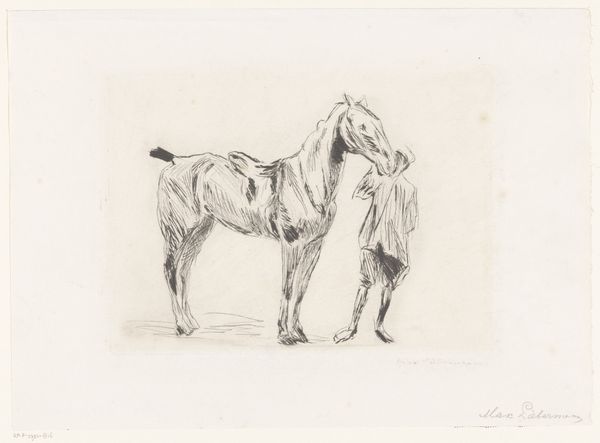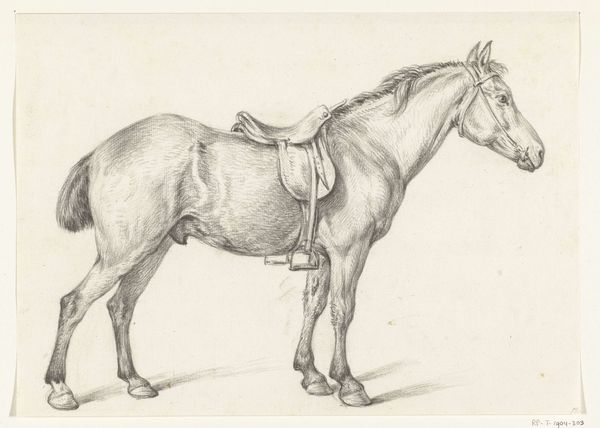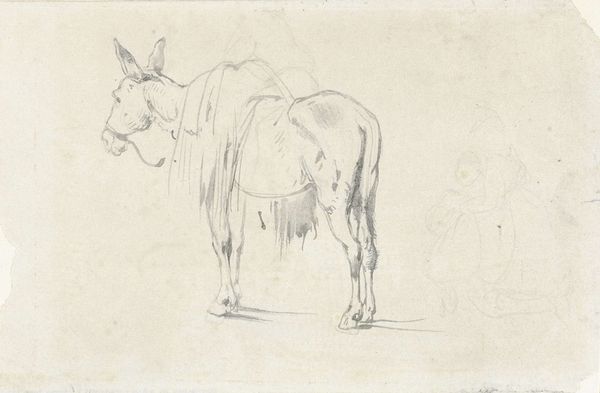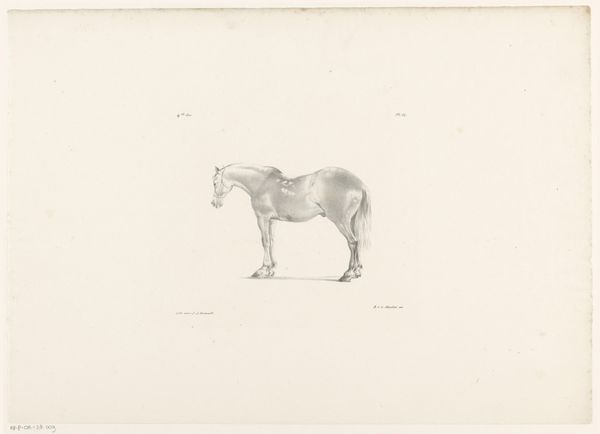
drawing, pencil
#
drawing
#
pencil sketch
#
landscape
#
pencil
#
horse
#
realism
Dimensions: height 430 mm, width 270 mm
Copyright: Rijks Museum: Open Domain
Curator: Gijsbertus Craeyvanger’s drawing, simply titled “Drie paarden,” which translates to “Three Horses,” executed in 1827. It’s currently housed here at the Rijksmuseum. Editor: The stark simplicity is striking. These horses rendered in pencil against the blank paper ground, creates a composition almost diagrammatic in its purity. It makes me wonder about the context of its making. Curator: I see it speaking to a time of burgeoning interest in animal anatomy. Notice the varying degree of finish applied to each horse; the harness on the lowest animal denoting his domestication for service. It's as if Craeyvanger is cataloging the varying degrees of the human/animal connection and a subtle suggestion about human dominance in animal representation. Editor: Interesting, though I see a connection between Realism and its pursuit of an almost photographic objectivity—especially when rendered monochromatically like this piece. The formal economy really shines—Craeyvanger uses only pencil, employing various grades for contrast, yet the eye is immediately led around the piece, completing the narrative implied by these seemingly disparate representations of each horse. Curator: Horses have, of course, borne tremendous symbolic weight in different cultures across history. Here they’re portrayed more as working animals. We lack the grandeur we might see in earlier equestrian portraits celebrating power. Their slumped posture gives us an unsentimental assessment, highlighting function over symbolic glorification. They really seem ordinary! Editor: It also highlights something of a shift away from the aestheticized depictions that would likely have featured in paintings during that era. This drawing is not overly interested in the horses' beauty so much as their essential forms, revealed to us via subtle differences in line weight and form in service of verisimilitude. Curator: Yes, almost devoid of any real emotional connection—the cultural context of this drawing situates the animal as just another tool within a rapidly industrializing landscape, and thus subject to close anatomical scrutiny as such. Editor: Well, viewing it now, my initial impression is that these horses provide us with a valuable perspective of their cultural and economic position. Curator: Exactly! A glimpse into a transforming human world from a different species viewpoint, no longer symbols of majesty.
Comments
No comments
Be the first to comment and join the conversation on the ultimate creative platform.
